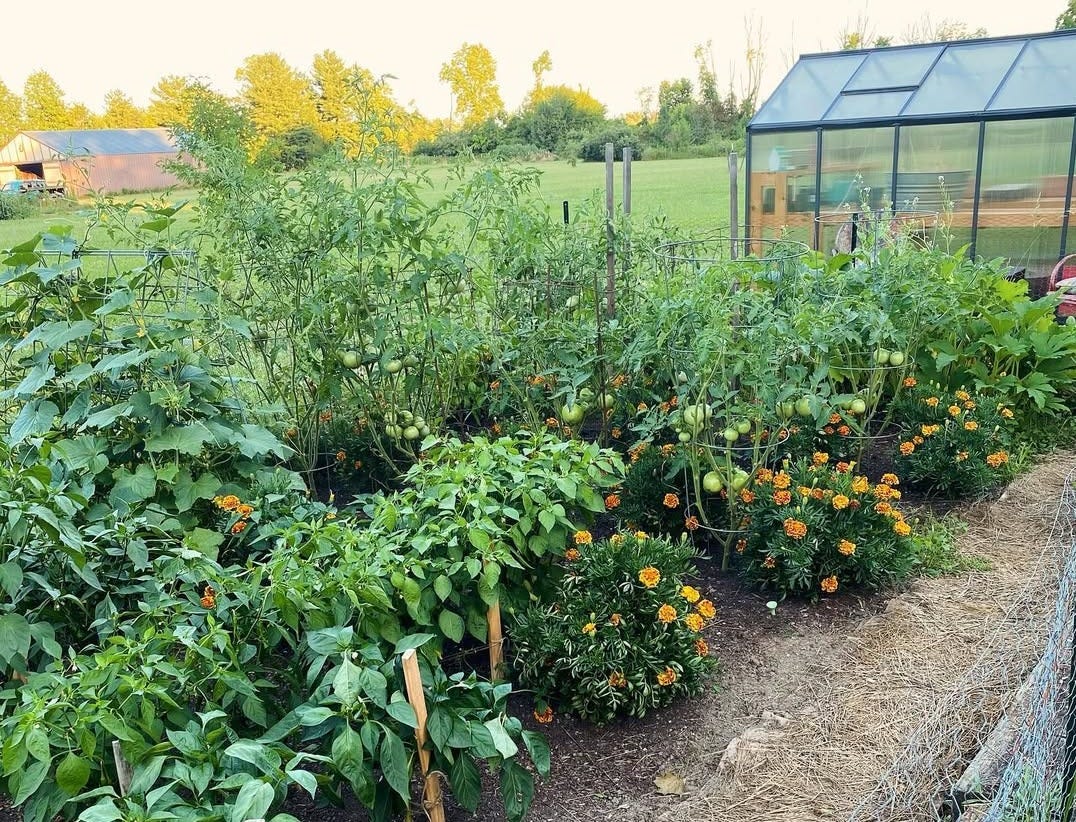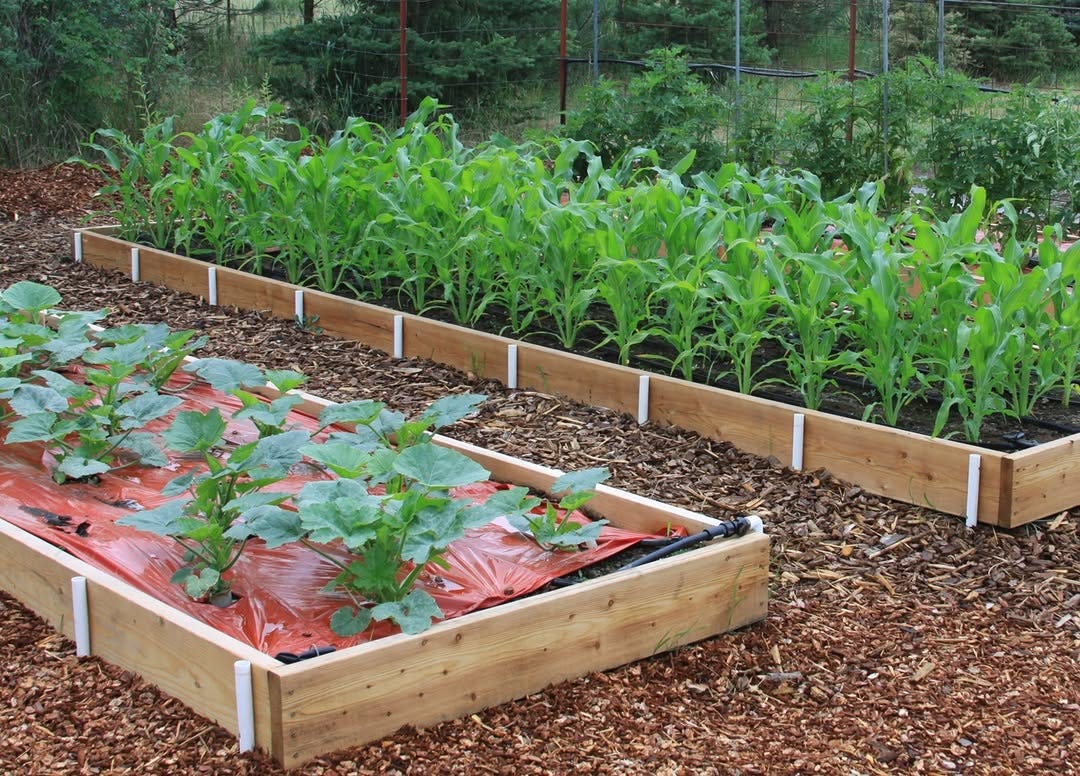The Newbie's How-to Guide to Cultivating Your First Garden Plot
Nature doesn’t care if your rows are straight...
Starting a garden can feel more than a little overwhelming—especially if you’ve never grown anything before. Maybe you’re dreaming of homegrown tomatoes and fresh herbs at your fingertips. Or maybe you’re simply after a patch of green to call your own. But before the harvest comes the groundwork, and that all begins with the beds.
The good news? Building your first garden bed is easier than you think—and incredibly rewarding. Whether you’re working with a sprawling backyard or a modest patch of earth, this newbie’s how-to guide to cultivating your first garden plot will walk you through the essentials step by step. No fancy tools or contractor experience required—just a bit of time, some basic materials, and the willingness to get a little dirty.
Let’s break ground and build something beautiful!
To see other great resources in this ongoing series, please check out the Homesteaders’ Handbook at the Runamuk Acres Farm-Blog! I also invite you to view my About Page to find out who I am and why I am doing this. Or just dive right into the archives! At “Runamuk Acres” you’ll find the recantings of one lady-farmer and tree-hugging activist from the western mountains of Maine. #foodieswanted
In This Post:
The Foundation of the Garden
Step 1: Choose the Right Spot
Step 2: Decide on Bed Type
Step 3: Plan Your Garden Layout
Step 4: Build the Beds
Step 5: Amendments
Nature Doesn’t Care
The Bottom Line
Actionable Tip
The Foundation of the Garden
Garden beds serve as the foundation of the garden, creating an intentional, controlled environment where plants can thrive.
Dedicated beds allow you to build and maintain high-quality soils. Beds provide the structure of your garden, allowing for better spacing, companion planting, and crop rotation. They offer some distinction from the surrounding landscape, enabling the grower to avoid soil compaction from foot-traffic.
Well-constructed beds improve drainage, preventing root rot and other water-related issues. They help retain moisture and smother weeds when mulched properly, reducing the need for frequent watering and helping with pest control.
Beds bring visual order to the garden, making it easier to manage and more inviting. A tidy, organized garden also tends to be more productive because you’re more likely to stay on top of maintenance.
TERMS TO KNOW
Garden Bed - A defined area of soil where plants are intentionally grown. Think of it like a dedicated “home” for your vegetables, flowers, or herbs—separate from the rest of your yard or landscape.
Garden Plot - Comprised of multiple beds, the garden plot is rather like a neighborhood where a diverse array of plants live and are tended by their gardener.
Raised Bed - A contained box or frame (usually wood, metal, or stone) filled with soil above ground level. These are good for poor soil areas and sometimes offer better drainage than an in-ground garden, with the advantage of being easier to access.
In-Ground Beds - A section of earth that’s been cleared, amended, and planted directly into. Ideal for larger gardens and deep-rooted plants, as well as more affordable to set up.
Step 1: Choose the Right Spot
Choosing the right spot for your new garden is critically important to your success as a grower. Look for a location that offers these 4 components:
Sunlight: Most vegetables thrive in full sun, so look for a spot that receives a minimum of 6-8 hours of sunlight.
Accessibility: Is it near a source of water to make watering easy?
Soil-Drainage: Avoid low-lying or soggy areas.
Protection: Wind-breaks and critter-control can be a huge asset for the garden.
Step 2: Decide on Bed Type
The next thing you’ll want to do is to decide upon the type—or types—of beds you want to employ in your garden.
➡️Raised beds are nice for the elderly and the handicapped, but can be a financial impediment to getting started. They can also be time-consuming to establish, whereas the in-ground bed is more cost-effective and easier to get growing.
➡️Container gardens or hydroponic systems can be a solution for small-space growers and homesteaders who are renting their home.
➡️In-ground plots make for a quick and easy start to your gardening ambitions, though weeds and soil conditions may pose a challenge.
When making your selections, consider how you will manage your beds. What will you need for soil amendments? How will you water them? Will you be able to keep up with the weeding? What about harvesting?
Be realistic about your time, energy and physical capabilities and select accordingly.
Step 3: Plan Your Garden Layout
This part is fun!
Get yourself paper and pencil—some people like graph paper—and sketch out your garden. There are no rules here. Your garden could be square or rectangular, but also circular or horseshoe-shaped. You can implement a multitude of garden-scaping techniques or just keep it simple. It’s all up to you!
Whatever you do, though—don’t forget the garden pathways.
I like a 12-inch wide path between most beds, 24-inches between neighborhoods, and 48 up through the middle of the garden. This allows space for me to congregate any tools, wheelbarrow, seed-trays or hoses and minimizes the risk of beds getting stepped on or compacted.
Step 4: Build the Beds
How you build your garden beds will largely depend upon the type of bed you choose to employ.
RAISED BEDS
A very basic construction project that I am confident you can manage, raised beds make a nice start or addition to the home garden. I am not going to break down this project here, but rather point you to this excellent resource provided by the Old Farmers’ Almanac: How to Build a Raised Garden Bed: Step by Step Guide.
CONTAINERS
Whatever type of container you choose, be sure it has holes for drainage, and then place a layer of stone or pebbles at the bottom before adding your soil mix. This will do 3 things for you:
The soil won’t be lost through your drainage holes during watering
Ensures proper drainage for the plants contained
Decreases the amount of soil needed to fill the container, thus reducing start-up costs.
IN-GROUND
To establish an in-ground garden plot, you can either till or smother.
Tilling: Tilling is a relatively quick process and can be done in an afternoon. Once completed you should let the plot rest 24-hours, then walk through to pick out any stones or weeds before marking out your garden beds. You may want a tape measure or field tape, string and sticks to line out where beds and pathways will go. Once you’ve created the pathways you’re ready to go!
Smothering: Comparatively, smothering requires a swath of black plastic or silage tarp and several weeks’ patience to kill the grasses and sod. If your soil is very compacted you may want to use a broadfork to loosen and aerate. Though more labor intensive, this tool makes it easy to create beds in long straight lines while preserving the beneficial life-forms within your soil.
Step 5: Amendments
For those intending to use raised beds or container-gardens, let’s say your boxes and planters are ready and filled with whatever soil mixture you’ve decided to use.
For gardeners installing in-ground plots, at this stage you have your beds and pathways marked out and you’re ready to start planting—almost.
It is at this stage in both endeavors that you would add any amendments to the soil: compost, manure, bonemeal, alfalfa meal, etc etc. Follow the recommended application rates per square foot as listed on the package and don’t over-do it. Less is more in these situations and too much of a good thing can be harmful to both your plants and soil microbial life.
Mix in the amendments with a spading fork and then give your beds a good soaking 24-hours before planting.
NOW you’re ready to plant.
Nature Doesn’t Care If Your Rows are Straight
Remember—you don’t have to have “perfect” conditions to grow food or flowers.
Nature doesn’t care if your rows are straight or whether you’re using raised beds over the old-school in-ground garden. She doesn’t care if you’ve never grown anything before, and she certainly doesn’t care if you’re gay, straight, married or single.
The beauty of gardening is—if you provide the right conditions—things are naturally going to grow. How well they grow is up to you.
The Bottom-Line
Building your first bed is a manageable and rewarding first step to creating your very own garden plot.
Actionable Tip
➡️Sketch out your garden plot to determine the size and layout of beds and pathways…








Thank you for sharing Sam:)
I love how much advice you give away. I hope you're growing by leaps and bounds, even though Substack refuses to give us a category!